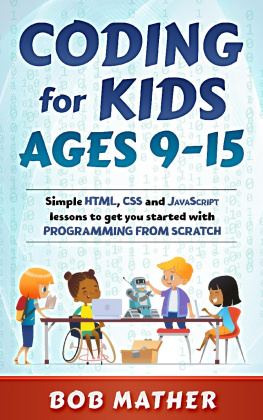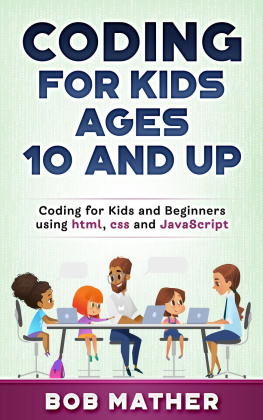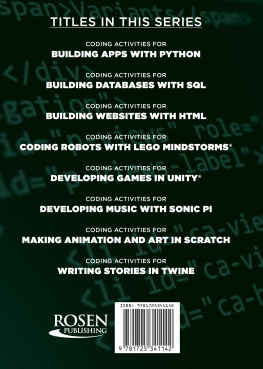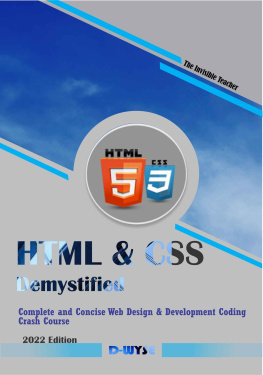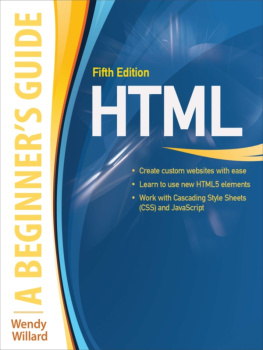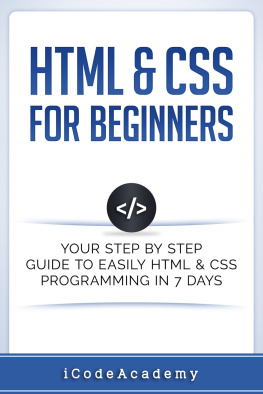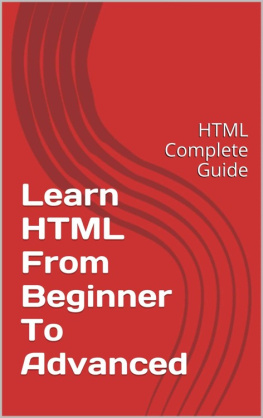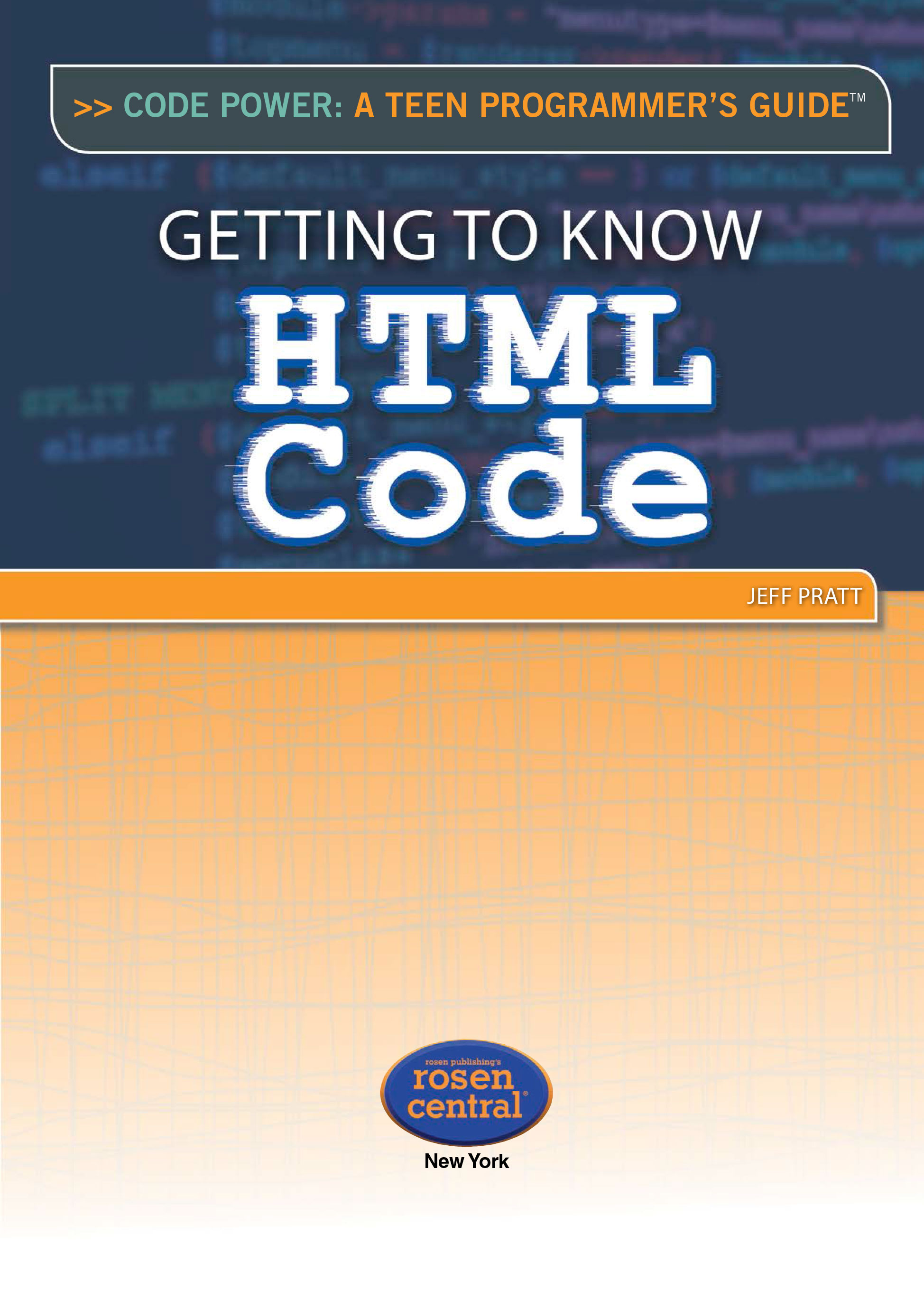Published in 2019 by The Rosen Publishing Group, Inc.
29 East 21st Street, New York, NY 10010
Copyright 2019 by The Rosen Publishing Group, Inc.
First Edition
All rights reserved. No part of this book may be reproduced in any form without permission in writing from the publisher, except by a reviewer.
Library of Congress Cataloging-in-Publication Data
Names: Pratt, Jeff (Software developer), author.
Title: Getting to know HTML code / Jeff Pratt.
Description: First Edition. | New York : Rosen Publishing, 2019. | Series: Code Power : a teen programmer's guide | Includes bibliographical references and index. I Audience: Grades 5-8.
Identifiers: LCCN 2018008323I ISBN 9781508183693 (library bound) I ISBN 9781508183716 (pbk.)
Subjects: LCSH: HTML (Document markup language)Juvenile literature. Classification: LCC QA76.76.H94 P735 2019 I DDC 006.7/4dc23 LC record available at https://lccn.loc.gov/2018008323
Manufactured in the United States of America
Contents
INTRODUCTION
T he computer age. The digital revolution. The information age. No matter what it is called, not since the Industrial Revolutionwhen industry and machine manufacturing replaced farminghas the entire world been changed so very much by technology. Computers and the internet have completely transformed the way people do almost everything: work, learn, shop, create, play, and even how people communicate.
No computer language has been more responsible for all this change than HTML. HTML (Hypertext Markup Language) is very easy to learn and also easy to deliver on laptops, phones, toys, e-readers, or anything else with a computer in it. Very quickly, HTML brought the internet from a few thousand computer hobbyists and academics in the 1980s to where it is today: more than one billion websites being used by three billion people almost half the worldeach day.
HOW DID IT HAPPEN SO FAST?
HTML was more accessible than any computer language before or since for the average person. First, web browsers (examples of web browsers include Microsoft Internet Explorer, Apple Safari, Mozilla Firefox, and Google Chrome) were on every computer and could show the content created by HTML code in a way that looked good and was simple to use. As for programming in HTML, most people could launch their first website in a few days because HTML used straightforward terms someone with no programming background could understand.
For instance: and . This code tells the text to appear blue and boldno programming jargon required.
With such a simple programming language behind it, the internet exploded in the 1990s, and millions of businesses and ordinary people discovered how to easily and quickly explore, collect, and share information online in a world now connected by computers. From entire libraries to collections of pictures, video, and music, people across the world could now display content and ideas for everyone else to find. Almost immediately, the internet (helped by HTML) provided shopping, live discussions, entertainment, polls, health services, online classesjust about everything people wanted.
Of course, over time, HTML has changed. HTML5 is the fifth update of HTML used as the industry standard. The language is always adding new elements and tools to keep up with the demand of people online who want to do and see new things. Still, most of the code is the same as what was first written way back in 1990.
Today, it is a code used by professional computer programmers as well as small business owners, bloggers, and pet owners looking to share the best pictures of their cat.
While HTML is the primary force behind the internet and most websites, pages that are more interactive typically require programmers who know other languages to add to the HTML (such as CSS, JavaScript, Java, and PHP, among others). However, learning HTML is the perfect starting point. It can lead you to learning these other languages and more about software and web development as a profession. With more and more business being conducted online every day, the need for employees who know web development has never been greater.
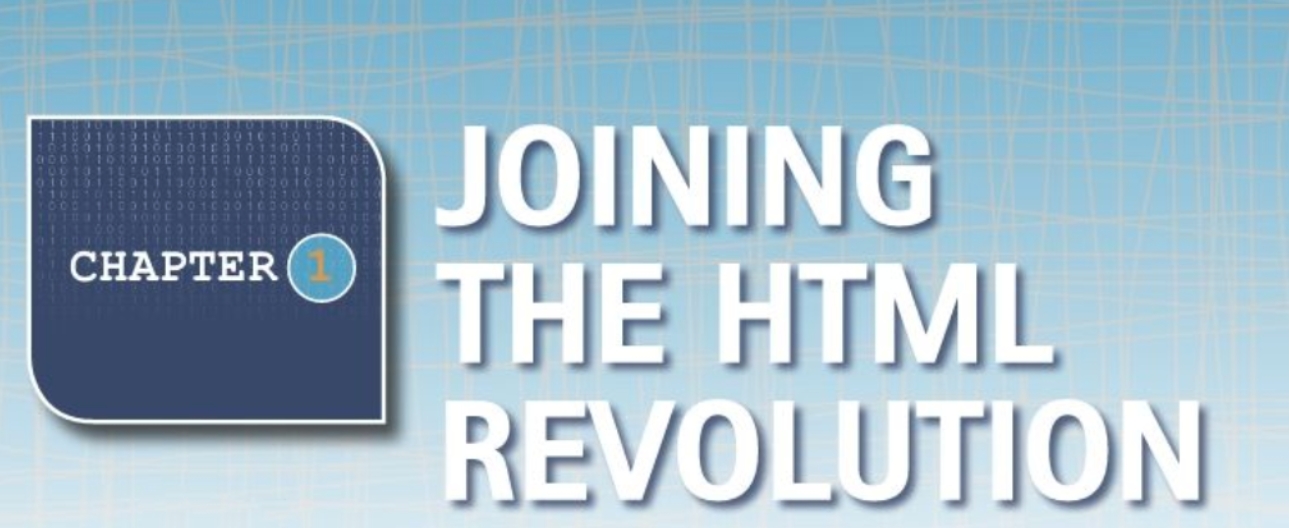
T he age of computers began when they were integrated nesses and homes throughout the 1970s and 1980s. Computers were great. They stored information, enabled one to make business charts, did complicated math and accounting, and even had some fun games, too. Eventually, people started sharing information either directly, from computer to computer, or over the earliest form of what is now a global internet. At first, only some advanced computer scientists and hobbyists knew how to make their computers talk to other computers. There was not yet an easy way for the average person to share information.
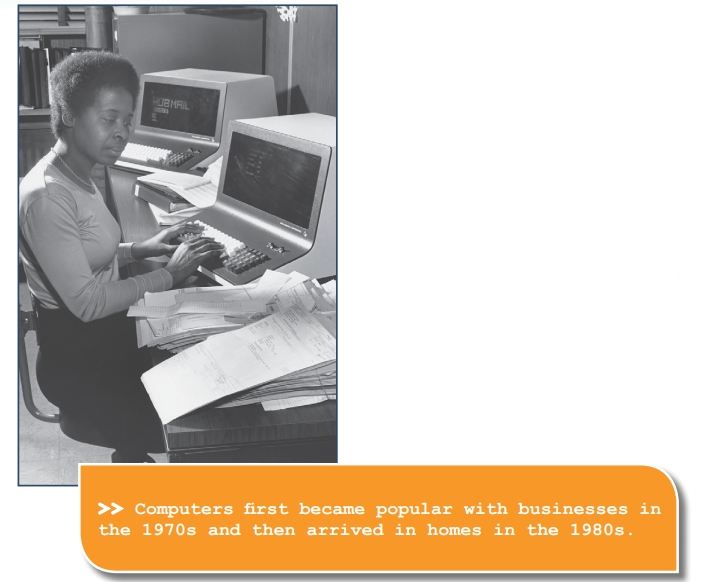
In 1989, an English physicist named Tim Berners-Lee wrote a memo proposing that his organization (CERN, the European Organization for Nuclear Research) design and use a simpler language for its hundreds of computer systems to share information across the internet. He called his language HTML, or Hypertext Markup Language. Hypertext indicated that the text would easily hyperlink (or link) to other pages. Markup means that someone could literally mark up the words with bold, italics, colors, underlines, or different fonts. In 1990, Berners-Lee wrote the first browser and server software to make this new simple language work. Berners-Lee argued that HTML would be perfect for encyclopedias, online help, documentation, tutorials, news, collaborative authoring (several authors working on the same project), and personal notebooks.

In 1991, CERN introduced HTML and the World Wide Web to the rest of the world. Decades later, there are more than a billion websites and half the world uses the internet every day. One of the reasons HTML has taken off so quickly is because of how easy it is to use, even for beginners.
>>A BRIEF HISTORY OF THE INTERNET (AND HTML)
1973: The University College of London (England) and the Royal Radar Establishment (Norway) connect via a system called ARPANET; the term internet is born.
1976: Queen Elizabeth II sends her first email.
1985: Symbolics.com, a computer company, launches the first website.
1990: Tim Berners-Lee, a physicist at CERN, develops HTML.
1992: The first audio and video files are distributed over the internet.
1993: There are now six hundred websites online. The White House maintains one of them.
1995: Microsoft releases its first web browser: Internet Explorer.
1995: Compuserve, America Online, and Prodigy begin to provide internet access to consumers. Amazon, Craigslist, eBay, and Match.com go live.



